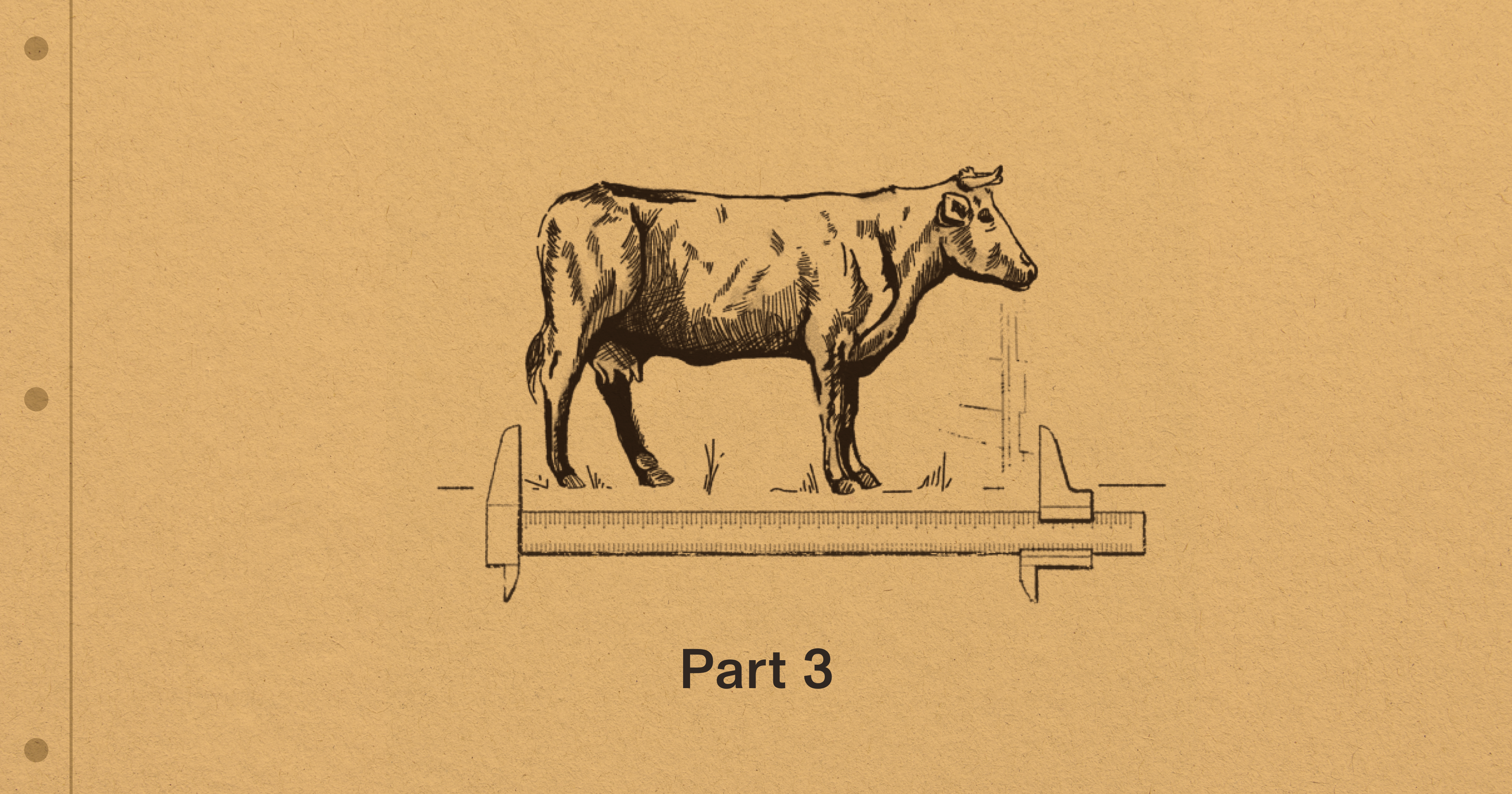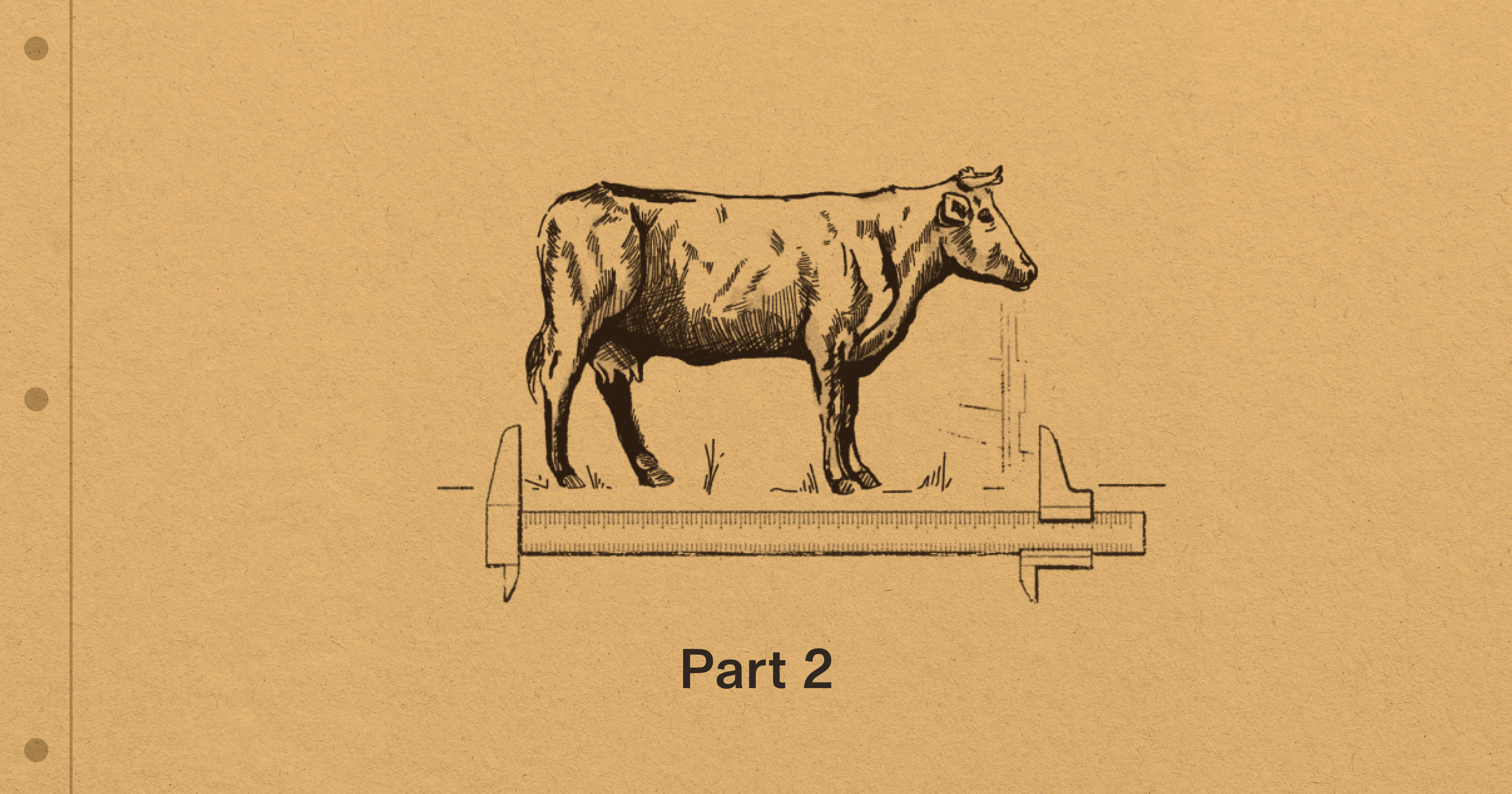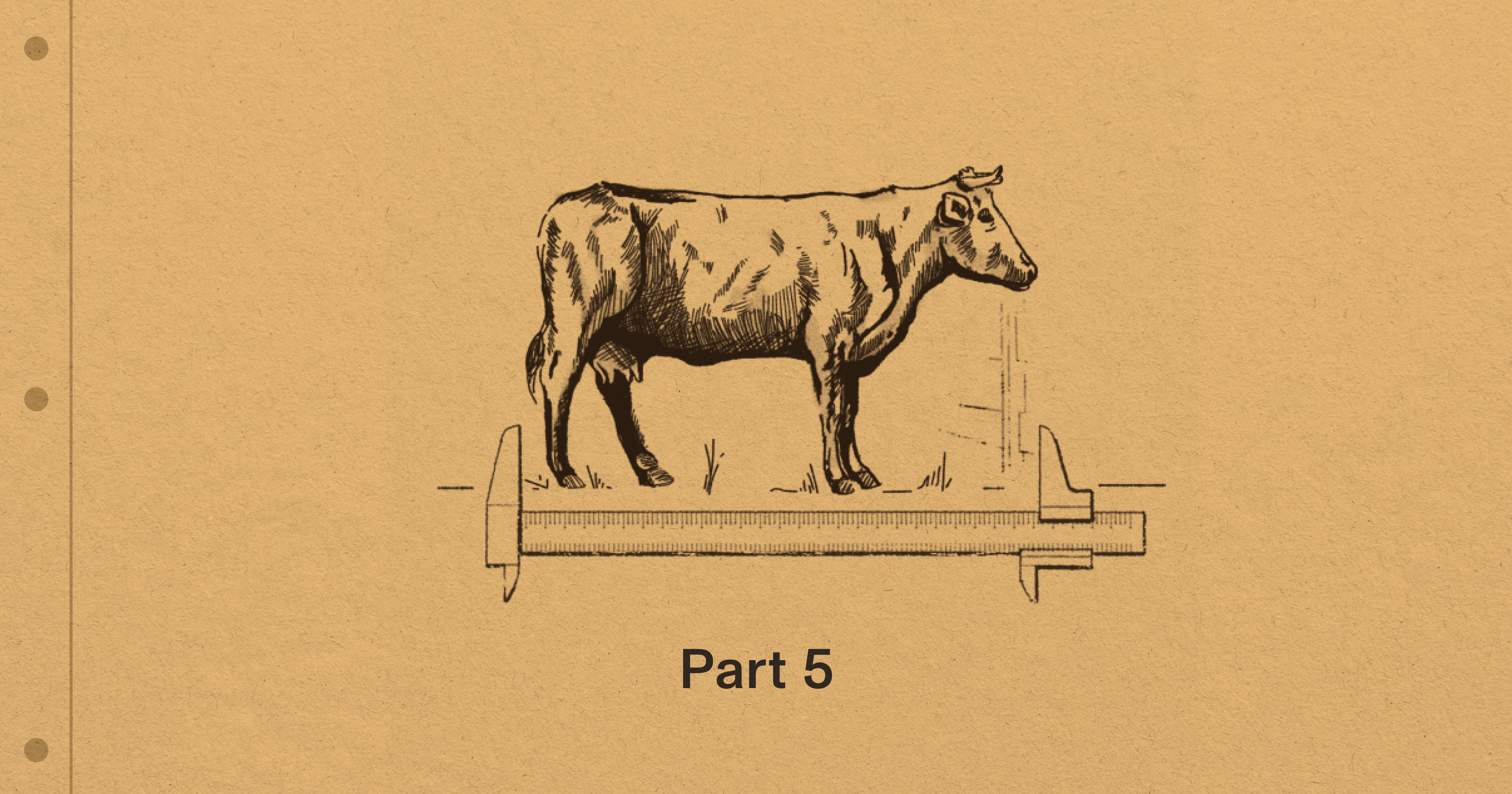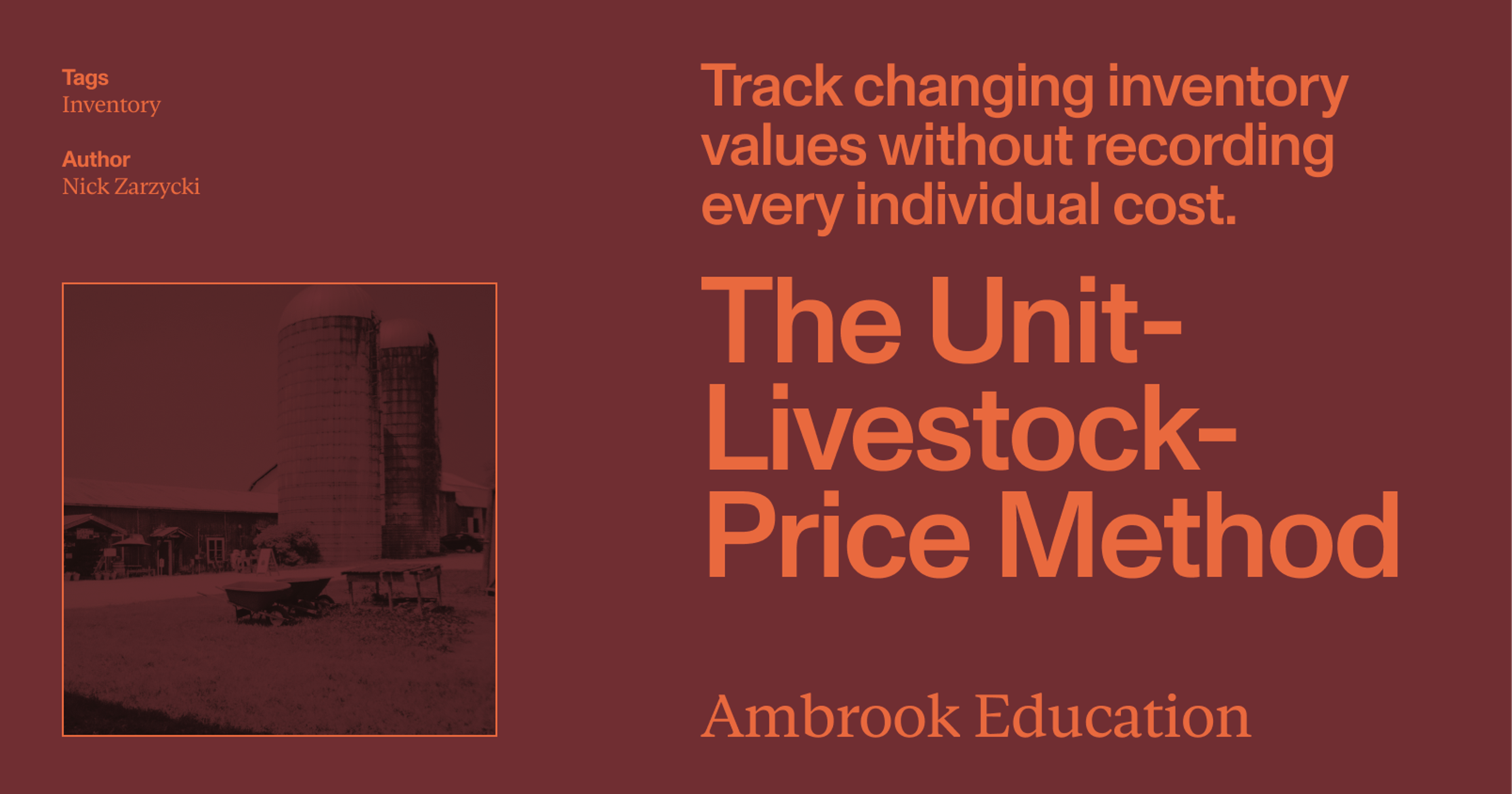Part Three of Managerial Accounting for Raising Livestock for Cow-calf, Dairies, and other Breeding Stock Operations
Livestock Accounting 101 is an important framework to know, but the real work is implementing these concepts in practice. In this article, we will discuss the valuation methods available and provide both tools and examples to implement the Base Value method.
According to the FFSC 2024 Guidelines there are “two central issues” in determining balance sheet values for raised breeding livestock: (1) correctly valuing the asset and (2) understanding how to adjust the managerial farm income statement (different from the taxable income). The two challenges are intertwined.
Let’s think about a cow-calf operation that begins the year with 50 yearlings that have been designated to be kept as replacement heifers. The operators spend all year raising those yearlings (with none sold or lost), and at the end of the year, the yearlings are now 50 bred heifers. On a tax basis, this part of the business hasn’t made any money, but real value has been created. The expenses to raise those yearlings are not regular expenses – it’s an investment in future profits. This is the reason we need to value the difference between a yearling and a bred heifer, to understand managerial income.
Valuation Methods
There are two broadly accepted ways to value your raised livestock.
The Full-Cost Absorption method is the most robust. It entails tracking all expenses by specific animals and accruing it into the balance sheet (and not deducting expenses in the period they were incurred). Doing this method correctly can be complex and time consuming – while it is useful, it will be covered more at length in a future article.
The Base Value method is easier if you are just getting started. This method involves identifying the major categories of maturation your livestock goes through and estimating an average cost to raise the animal to each point in your breeding process. The Texas A&M extension office has good resources to help define and think through animal categories as well as other key terms (see here).
For example, the balance sheet on a base values basis for a cow-calf operation at the beginning of the year might look like:
| Category | Base Value | Headcount | Balance Sheet |
|---|---|---|---|
| Calves | $250 | 0 | $0 |
| Replacement Heifer | $650 | 50 | $32,500 |
| Bred Heifer | $925 | 25 | $23,125 |
| Raised Cow | $1,000 | 125 | $125,000 |
An important note to the above is that you will see we have chosen to value calves in this exercise despite the fact that they are not all going to be kept as part of the breeding stock. The purpose of doing managerial accounting is to be flexible and provide relevant insights. If you are a cow-calf operation you surely care about the value of the calves you have in inventory, so it makes sense to track them. The fact that you are including some calf inventory that may be held for resale on the balance sheet can be explained to loan officers or other financial professionals.
Tracking Livestock & Implementing the Base Value Method
As illustrated above, tracking headcount is at the heart of implementing the Base Value method. You may have specialized livestock management software with reports to help you track this type of information, but if you don’t, we have also created a Managerial Stock Flow Workbook to help you get started. There are four steps you need to take as an operator:
Establishing your tracking groups and base value estimates
Tracking and logging your inventory related transactions and transfers week to week
Reviewing the changes in your inventory by animal category on a regular cadence
Creating the monthly journal entries to represent these changes on a managerial basis
As shown in the workbook, there are some nuances in the way you treat deaths or sales of farm-raised animals from an accounting perspective. But, as long as you are diligent about logging events - purchases, sales, and transfers between categories - and keeping notes, managerial accounting is something you will be able to do. For additional information about Stock Flow plan implementation see this Ranching for Profit video.
Common Mistakes to Avoid in Estimating Base Values
The logic behind using base values is to estimate the cost of production associated with raising livestock, in order to represent them at a cost basis on your balance sheet. In making this estimate there are two common pitfalls that you should seek to avoid:
Accounting for management labor and depreciation - Your own labor and annual depreciation expenses are often the two largest expenses associated with raising livestock, but both of these are typically “non cash expenses”. Owner’s pay is typically rolled into an equity account, and depreciation is a non cash expense by definition. When coming up with a base value estimate you should do your best to account for these costs.
Factoring for inflation - For consistency, you should aim to select a base value that is reliable for at least 3-5 years. However, due to inflation, many of the costs of production increase over time naturally. When selecting a base value amount, using a conservative (meaning higher in this case) estimate can help account for the rise in costs due to inflation over time.
Animal Categories as Enterprises on Ambrook
Ambrook has built a concept called enterprise tags that you can set up to correspond to the animal categories you are tracking as part of your managerial bookkeeping. Doing this makes it easy to allocate your overhead expenses by your different animal categories, which you can combine with changes in these asset values to get a wholistic managerial income statement.
One of the reasons it’s worth doing this process is that you want to be able to see a useful P&L statement for your operation even during the parts of the year where there isn’t a ton of cash basis activity going on. Our next article will walk you through the way the managerial entries impact your Managerial Financial Statements.






